Today, let me share all you need to know about render farm cost calculator.
This article took me a lot of time and effort to understand how the pricing and cost calculator on a render farm works. But this is worth it, as I have a general idea of how a render farm will charge me. Today, let me share all you need to know about the render farm cost calculator.
How does a render farm cost calculator work?
Cost calculator or cost estimator on a render farm is to help you receive an instant quote with pricing. You often choose available options CPU/GPU, enter your number of frames, estimated time for each frame, and number of CPU/GPU you wanna use. Then the farm will estimate the cost for you. It may vary, but in general, you will have a glimpse of how much you should prepare.
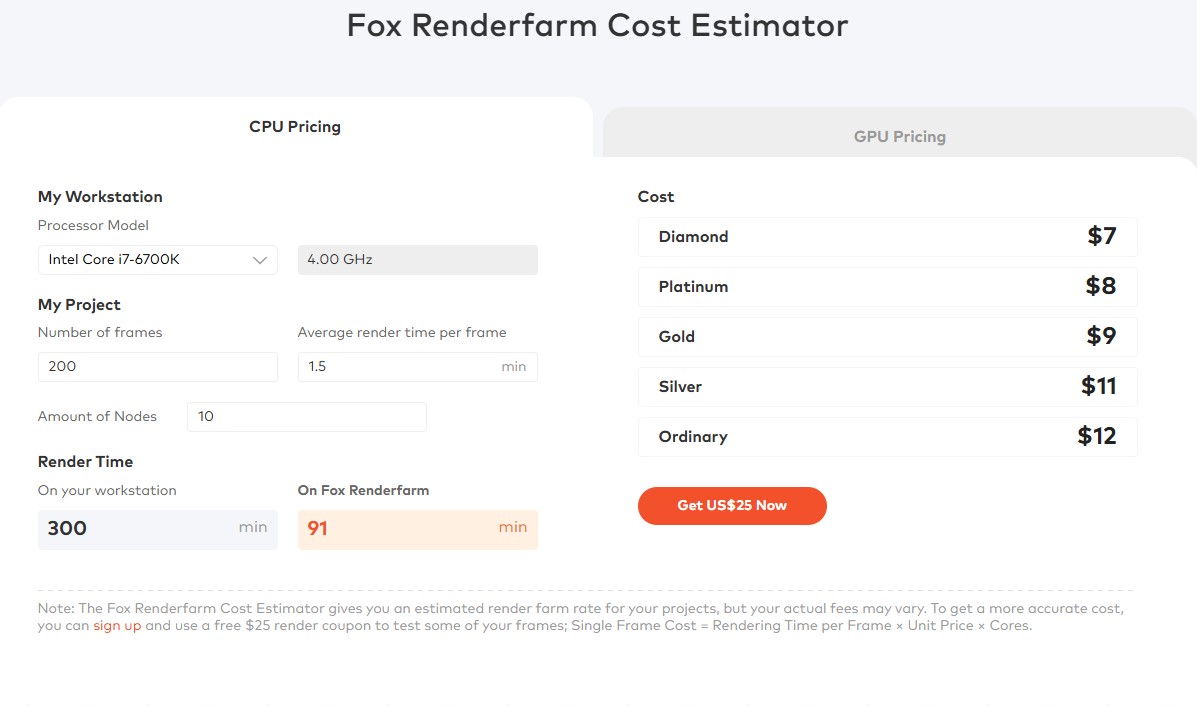
Have you ever wondered why the render farm can render faster than your own machine? Because they have more powerful machines? Not really. Sometimes, it’s just more number of machines. When you provide them your workstation information (processor or GPU model), your project information (number of frames, average render time per frame on your machine), they know the speed of your workstation compared to one of their node. If you choose more nodes (on their render farm, of course), the render time will reduce.
The cost calculator is very easy. You just need to choose your CPU/GPU (or the one nearest to it), enter some other information, they will have the estimated price for you. But you can also take their estimated render time in the cost estimation result, check their price rate, and do it by yourself. The costs sometimes differ. How do you do it? Let’s explore further below.
As I check and review all the farms, they often have some common ways to calculate price rate, which are based on GHzh, OBh, Core hour, or Node hour.
GHzh is gigahertz per hour. GHz speed is what each core inside a processor chip runs at. This is used in CPU cost calculation. On a render farm, how can you calculate the price based on GHzh? Let’s take the price of GHzh is $1, and you use 1 hour, does that mean you have to pay $1? No, the price is more complicated than that. Remember above, GHz speed is what each core inside a processor chip runs at, which means you have to pay attention to the number of cores they have and the GHz.
For example, if they have a CPU with 16 cores, a clock speed of 3.6 GHz, you use one CPU of them at a price of $1/GHzh, render in 1 hour, then the total cost will be:
Total render cost = number of cores x clock speed x price per one GHzh x render time
Or 16 cores x 3.6 GHz x $1 GHzh x 1hr = $57.6
Of course, this is just an example, so I took $1 per GHz. The real price of a render farm is not that high.
If you use 10 CPUs like above, in one hour, it means you have to pay 57.6 x 10 = $576. That’s the formula.
Now come to OBh. It is Octanebench hour, which is used in GPU cost calculation. Octanebench allows you to benchmark your GPU based on OctaneRender. It measures your GPU power compared to a GTX 980. You can come to this site to download the software to benchmark your own GPU, or come to this site to check the result. The score will help you use cost calculator on a render farm.

Now, for example, if a render farm charges you $1 per OBh, and you use 1 hour, does that mean you need to pay $1? No again. OBh is a price for 1 OctaneBench (OB) used in an hour of rendering. So you have to pay attention to the score of the GPU you’re gonna use on the render farm.
For example, the GPU you use is one RTX 3090, in one hour. Price is $1 per OBh. Then the total cost will be:
Total render cost = Octanebench score x Price per Obh x Render time
Or 648 points x $1 x 1hr = $648
Of course, this is just an example, so I took $1 per OBh. The real price of a render farm is not that high.
There is another way to calculate CPU cost on a render farm, which is Core hour. The formula is
Total render cost = number of cores x price per core hour x render time
If you use 16 cores at a price of $0.5 per core per hour, used in 1 hour, you have to pay 16 cores x $0.5 x 1hr = $8.
This is just an example, so I took $0.5 per core per hour. The real price of a render farm is not that high.
Finally, Node hour is kind of similar to GHzh or OBh, used for both CPU and GPU cost calculating. The formula is:
Total render cost = price per node per hour x render time
Node hour is often a price for 1 hour of rendering on a single CPU or GPU node. There, you have to pay attention to the price of a single CPU or GPU node.
There is also one factor that could affect your total render cost, which is priority. Sometimes it’s high, medium, low, sometimes it’s Standard, Prio +1 to +7. It depends on the render farm.
Usually, high means more expensive, and low means cheaper. And this is for the queue, you will get to render first or wait to render later. It doesn’t mean you get the better CPU or GPU.
SaaS render farm cost calculator
In this part, we will explore the pricing rate of each SaaS render farm.
Fox Renderfarm pricing
Fox will use Core hour for CPU and Node hour for GPU. Let’s take a look at their price:
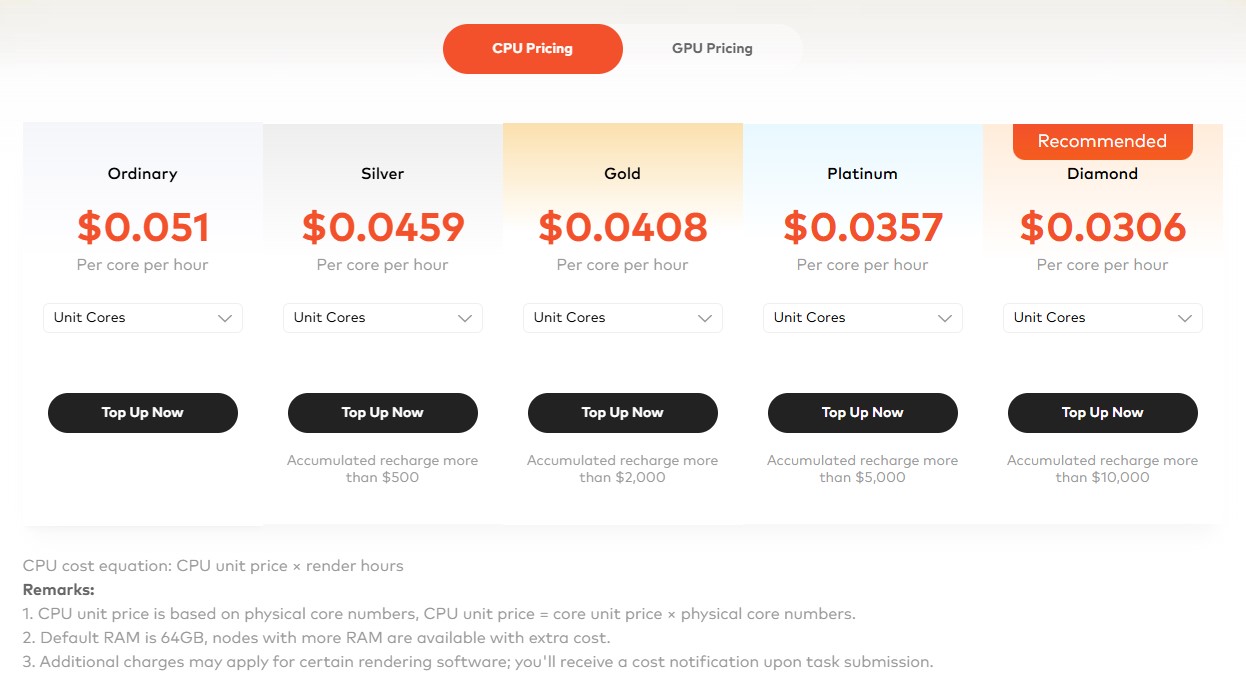
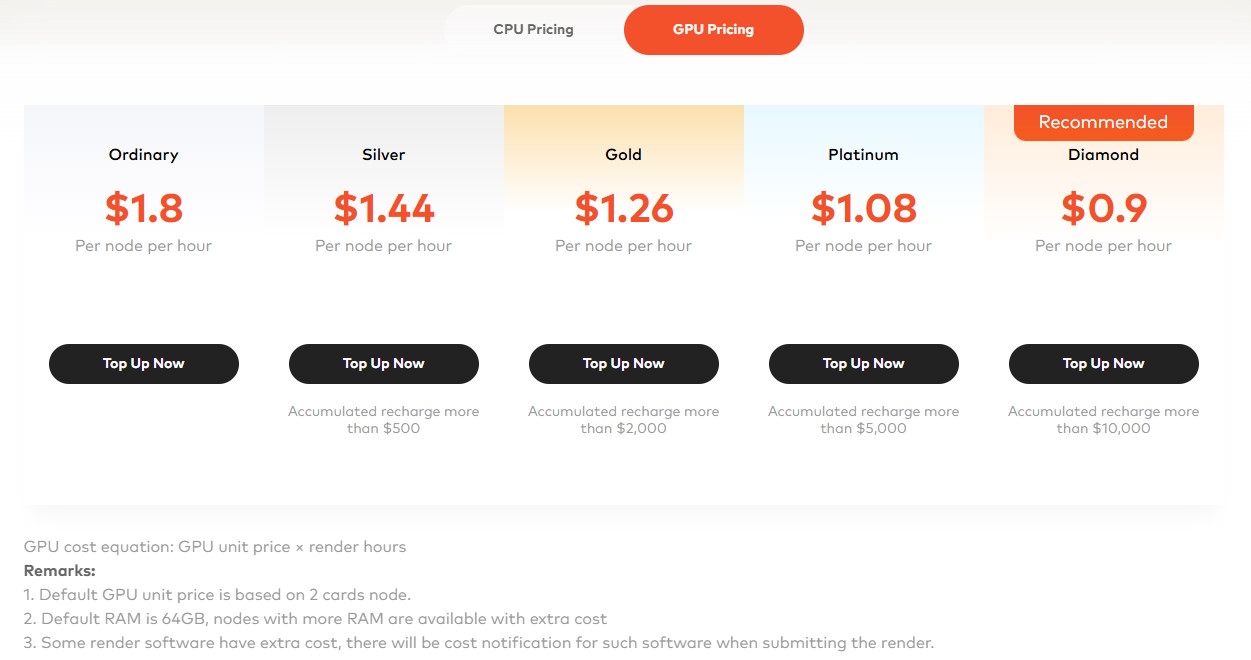
GarageFarm pricing
GarageFarm will use GHzh for CPU and OBh for GPU, or Node hour for both. Let’s take a look at their price:
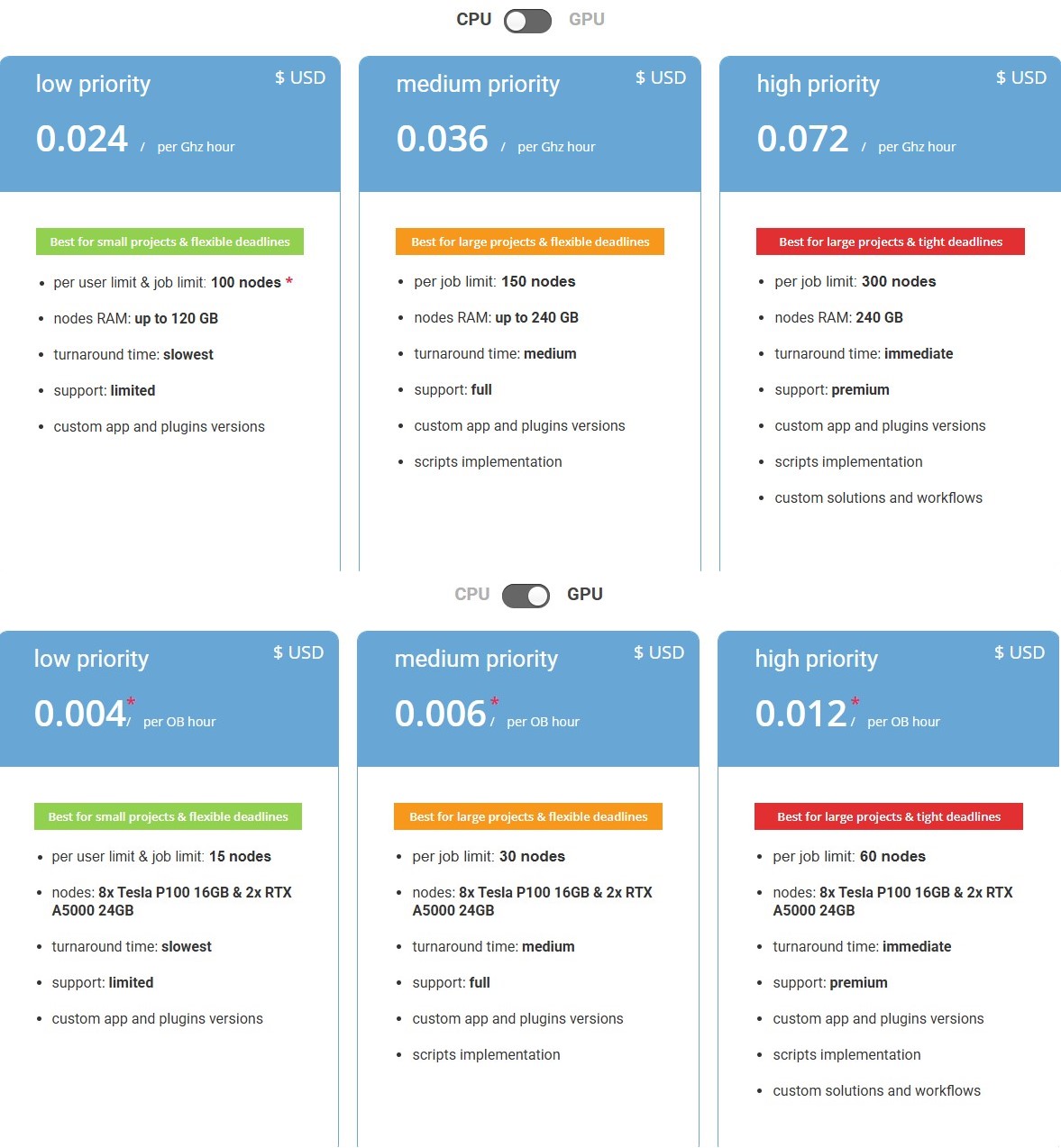
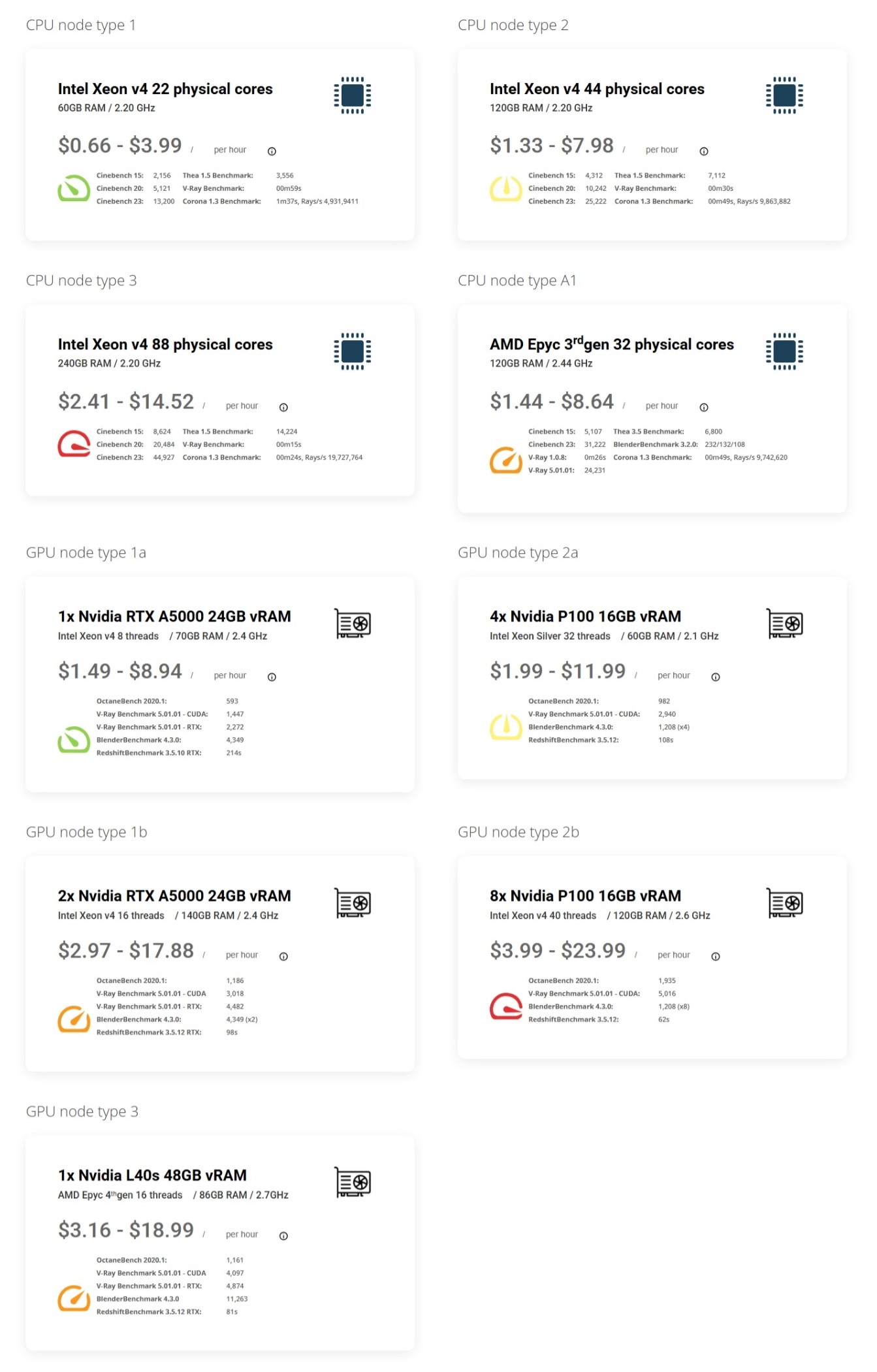
Ranch Computing pricing
Same as Garage, Ranch uses GHzh for CPU and OBh for GPU. Let’s take a look at their price:

RebusFarm pricing
Rebus will use GHzh for CPU and OBh for GPU. Let’s take a look at their price:
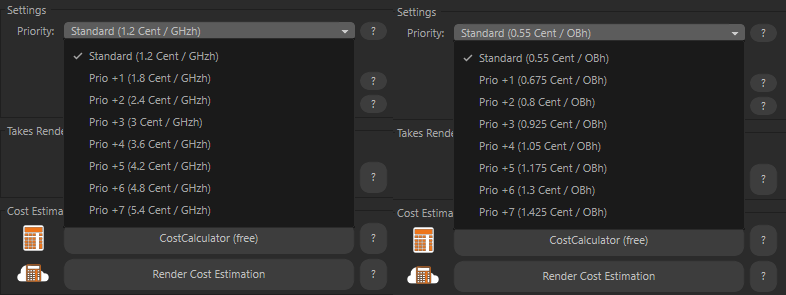
IaaS render farm cost calculator
iRender is the only IaaS render farm here, and they use node hour to calculate their cost for both GPU and CPU. The price for multiple GPUs is also per node per hour, which means all the GPUs included in the price, not each GPU costs that much. Let’s take a look at their price:
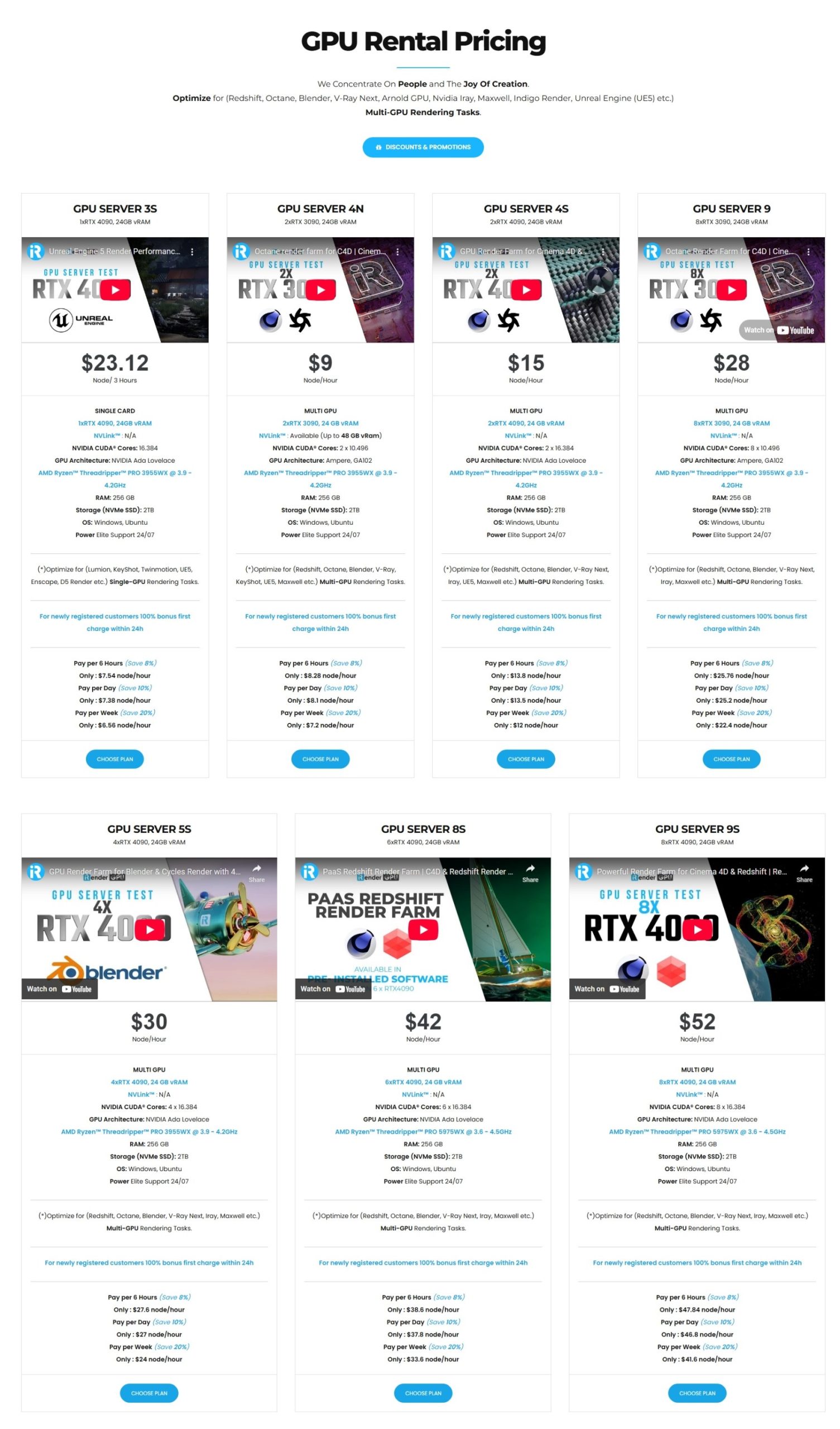
Final thought: Render farm cost calculator
If you take a look at the price rates or calculate your project cost on the render farm cost calculator, can you say which one is more cost-effective? Not really. This is what they display, so that we have a general idea of how much it costs. First of all, we don’t know the hardware, so we cannot compare whether it’s better or not. Secondly, in reality, the total cost will vary, and the best way is to try rendering some frames on the farm before making the decision.
Hope this article helps you understand how the render farm cost calculator and pricing work, and choose the best one suitable for your budget.

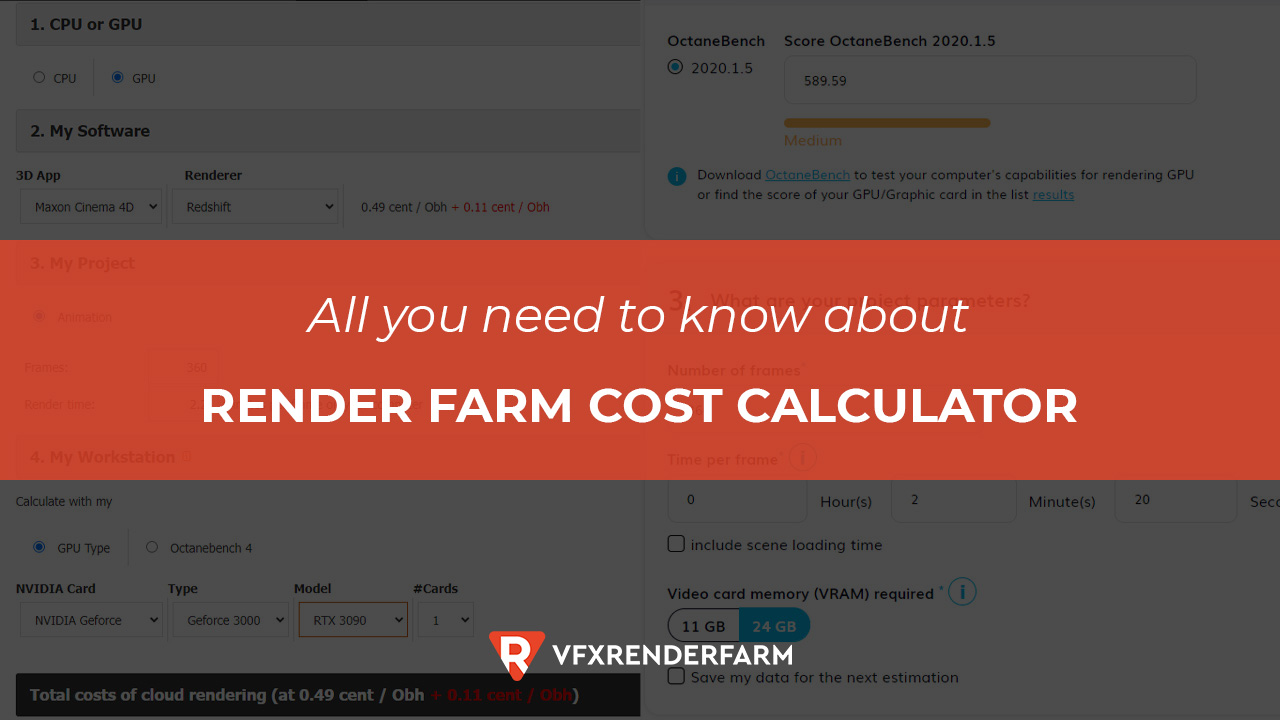
COMMENTS